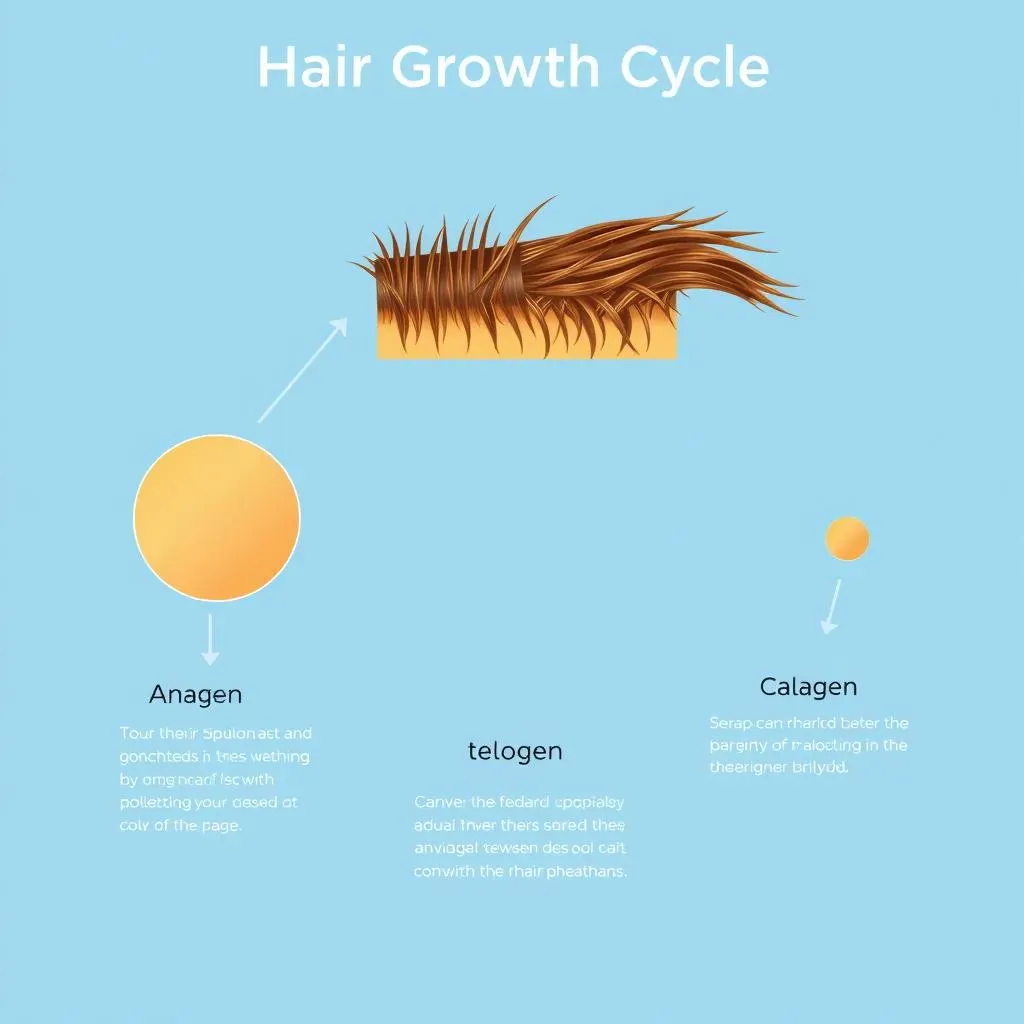Table of Contents
Are you considering at-home laser hair removal but unsure how often to use the device for optimal results? You're not alone. With the rise of at-home laser hair removal, many people are left wondering how to get the most out of their device. The key to successful hair removal lies in understanding the hair growth cycle and treating the follicle at the right time. In this article, we'll delve into the importance of treating every two weeks, how to use laser pulses efficiently, and the patience required to achieve long-lasting results. We'll also explore tips for successful treatment, maintenance, and battery life, as well as expert opinions to guide you through the process. By the end of this article, you'll have a clear understanding of how often to do laser hair removal at home and how to maximize your results. So, let's get started on this journey to smooth, hair-free skin.
Understanding Hair Growth Phases: The Key to Successful Laser Hair Removal

Understanding Hair Growth Phases: The Key to Successful Laser Hair Removal
Understanding the Hair Growth Cycle
The hair growth cycle consists of three phases: anagen, catagen, and telogen. The anagen phase is the active growth phase, lasting anywhere from 2-6 years. During this phase, the hair follicle is most vulnerable to laser treatment. The catagen phase is a short transitional phase lasting about 2-3 weeks, where the hair growth slows down and prepares to enter the resting phase. The telogen phase is the resting phase, lasting around 3-4 months, where the hair is released from the follicle and eventually falls out.
For laser hair removal to be effective, it's crucial to treat the hair follicle during the anagen phase. Since not all hairs are in the same phase at the same time, treating every two weeks ensures that each follicle is targeted during its anagen phase. This frequency allows for the most efficient reduction of hair growth, as each treatment can affect multiple follicles in their growth phase.
Hair Growth Phase | Description | Duration |
|---|---|---|
Anagen | Active growth phase | 2-6 years |
Catagen | Transitional phase | 2-3 weeks |
Telogen | Resting phase | 3-4 months |
Why Treating Every Two Weeks is Essential
Treating every two weeks may seem frequent, but it's necessary to catch each hair follicle in its anagen phase. Given that the anagen phase lasts 2-6 years, but the entire growth cycle is around 3-6 months for most people, treating every two weeks ensures that all hairs are targeted during their growth phase. This frequency is key to achieving significant hair reduction over time.
- Treat every two weeks to catch hairs in their anagen phase
- Consistency is crucial for optimal results
- Results may take 3-6 months to become noticeable
How Often to Use Laser Hair Removal at Home: Finding the Sweet Spot

How Often to Use Laser Hair Removal at Home: Finding the Sweet Spot
When it comes to at-home laser hair removal, one of the most common questions is how often to use the device. While it may be tempting to use the device daily, hoping to speed up the process, this approach can actually be counterproductive. Overusing the device can lead to wasted laser pulses and potentially cause skin irritation. So, what's the sweet spot?
Most at-home laser hair removal devices recommend treating every two weeks. This frequency allows you to target the hair follicle during its anagen phase, maximizing the effectiveness of each treatment. Treating too frequently can cause damage to the skin, while treating too infrequently may not be enough to achieve significant hair reduction.
Treatment Frequency | Pros | Cons |
|---|---|---|
Daily | Quick results | Skin irritation, wasted pulses |
Weekly | Fast results, convenient | Potential skin damage, less effective |
Every 2 weeks | Effective, minimizes skin irritation | Results may take longer |
Monthly | Less frequent treatments | Less effective, slower results |
As you can see, treating every two weeks strikes a balance between effectiveness and safety. It's essential to follow this frequency to ensure you're getting the most out of your at-home laser hair removal device.
- Treat every 2 weeks for optimal results
- Avoid daily treatments to prevent skin irritation
- Be consistent with your treatments for the best outcome
Tips for Efficient Laser Hair Removal: Maximizing Results While Conserving Pulses

Tips for Efficient Laser Hair Removal: Maximizing Results While Conserving Pulses
Understanding Your Device's Capabilities
To get the most out of your at-home laser hair removal device, it's essential to understand its capabilities and limitations. Most devices come with a limited number of pulses, so it's crucial to use them efficiently. Treating only the areas that need it and avoiding overlapping treatments can help conserve pulses.
Another tip is to shave the area before treatment. This helps the laser target the hair follicle more effectively, reducing the number of pulses needed. Additionally, using a lower intensity setting for finer hairs and a higher setting for coarser hairs can also help maximize results while conserving pulses.
Intensity Setting | Hair Type | Benefits |
|---|---|---|
Low | Fine hairs | Conserves pulses, effective for smaller areas |
Medium | Medium hairs | Balances efficiency and effectiveness |
High | Coarse hairs | More effective for thicker hairs, but uses more pulses |
Proper Skin Preparation
Proper skin preparation is vital for efficient laser hair removal. Ensure the skin is clean and dry, free of lotions, creams, and makeup. Remove any jewelry that may interfere with the laser, and avoid treating areas with tattoos or moles. It's also essential to follow the device's guidelines for skin tone and hair color compatibility.
Using the device in a well-lit room can help you see the treatment area more clearly, ensuring you don't miss any spots. Additionally, wearing protective eyewear during treatment is crucial to prevent eye damage from the laser.
- Shave the area before treatment
- Avoid using the device on sensitive areas
- Follow the device's guidelines for skin tone and hair color
- Use protective eyewear during treatment
Maintenance and Battery Life
To extend the life of your at-home laser hair removal device, it's essential to follow proper maintenance procedures. Charging the device every 3 months, even when not in use, can help preserve the battery. Cleaning the device regularly and storing it in a cool, dry place can also help maintain its effectiveness.
Most devices can be used for 2-3 years with proper care. However, the number of pulses may vary depending on usage and maintenance. Always refer to the manufacturer's guidelines for specific maintenance instructions.
Maintenance Task | Frequency | Benefits |
|---|---|---|
Charging | Every 3 months | Preserves battery life |
Cleaning | After each use | Prevents bacterial buildup, maintains hygiene |
Storage | After each use | Protects the device from damage |
Trust the Process: Why Patience is Essential for LongLasting Hair Removal

Trust the Process: Why Patience is Essential for LongLasting Hair Removal
Understanding the Timeline for Results
One of the most critical aspects of at-home laser hair removal is patience. Achieving significant hair reduction takes time, and it's essential to understand that results won't appear overnight. The hair growth cycle, which includes the anagen, catagen, and telogen phases, spans several months. Treating every two weeks ensures that each follicle is targeted during its anagen phase, but this frequency also means that results will be gradual.
Most users start to notice a reduction in hair growth after 3-4 treatments, but full results may take 3-6 months to appear. It's crucial to trust the process and not get discouraged if you don't see immediate results. Consistency and patience are key to achieving long-lasting hair removal.
Number of Treatments | Noticeable Results | Full Results |
|---|---|---|
3-4 treatments | Reduction in hair growth | 3-6 months |
Maintaining Consistency and Tracking Progress
To ensure you stay on track with your treatments, consider marking your calendar every two weeks. This will help you remember when it's time for your next treatment and ensure that you don't miss any sessions. Tracking your progress can also be motivating, so take photos or notes after each treatment to monitor the reduction in hair growth.
It's also essential to be patient with yourself and your skin. Some areas may take longer to respond to treatment than others, and it's not uncommon for some hairs to be more resistant. Don't get discouraged if you don't see immediate results in all areas – trust that the process is working.
- Mark your calendar every 2 weeks for treatments
- Track progress through photos or notes
- Be patient with your skin and the process
Conclusion: Achieving Optimal Results with At-Home Laser Hair Removal
In conclusion, the key to successful at-home laser hair removal lies in understanding the hair growth cycle and treating the follicle every two weeks. By doing so, you'll be able to target the anagen phase, resulting in more effective hair reduction. Remember to use your laser pulses efficiently, conserve them when not in use, and maintain your device properly to extend its lifespan. Patience is also crucial, as full results may take 3-6 months to appear. With the right mindset and treatment schedule, you can achieve the smooth, hair-free skin you've always wanted. Visit hairawaybylaser.com for more information on at-home laser hair removal and take the first step towards a hair-free you.
